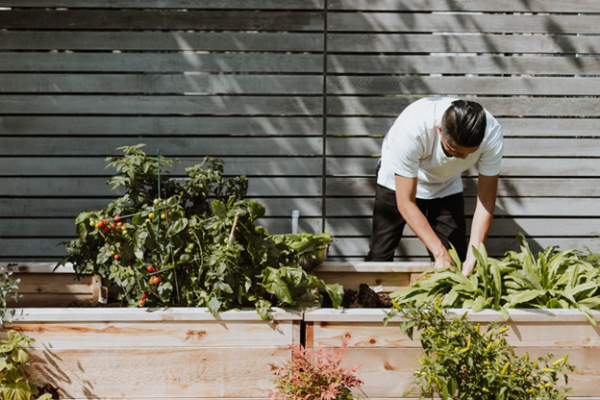
For Your Home Garden: 5 Vegetables To Plant During Fall Season
The only time it’s going to be too late for you to plant your seeds in your garden is when your entire garden is covered in snow! You’re going to see your garden be very empty during the whole of fall and that’s going to be very lonely not only for your garden but for you too! Fall is a great time for sowing seeds and garden work because of the crisp fall air!
I’m sure all of you that enjoy gardening want nothing more than a cozy fall, where you can take long walks in parks while hearing the satisfying crunch of leaves beneath your feet. Don’t start relaxing just yet! You need to get psyched up for the second half of gardening! No better time to work your gardening magic for a little while longer!
Kale
Kale is a vegetable that’s exceptional when it comes to cold-tolerance! So there’s no better vegetable for you to grow if you want to have nourishment during the long and cold winter months! Kale is the front runner in our list because it actually gets better the more frosts it gets – the starches will get converted into sugars in the stems because of the cold!
For crop in the fall, sow directly in full sun to a partial shade for around 8 weeks before the first frost comes. A cultivar(plant variety) for kale has to be the lacinato kale or dinosaur kale. It’s easy to grow and still packs that nutritional punch!
Collard Greens
Collards are very similar to kale regarding their resistance to cold conditions, nutritional value, and sweetness due to the cold. Not only that, but the way you plan collards is also similar to kale – sow directly into the soil in full sun to partial shade around 6 to 8 weeks before the first frost comes.
What makes the collard greens even better is that they can be planted in any USDA zone and can even spend the whole winter through zones 6 and up. Collards are heavy-feeders, meaning they require lots of nutrients to grow since they produce lots of harvestable leaves. So remember to give it rich soil when sowing and keep feeding it regularly throughout winter.
Bunching Onions
Bunching onions are a great addition to your fall garden since they are quite easy to grow, require minimal effort to tend to, and don’t take up as much space! Furthering my point, they’re perennial, meaning they can continue to grow and spread throughout the year – only if they are protected properly throughout the winter.
You should plant the bunching onions 8 weeks before the first frost comes, let them grow first indoors, then you can transfer later on. However, you can still sow directly into the soil in full sun to partial shade. Though these don’t guarantee a full harvest over winter, they’re still hardy – you just need to give them protection from severe conditions.
Garlic
Garlic, much like the bunching onions, is a perennial, so they will grow throughout the year, given that they have adequate protection through the winter. The trick with garlic is to plant them before the ground freezes. This will give them an early start for an explosive growth rate when springtime does come. Keep in mind which garlic cultivar you’re planting at which zone!
Garlic can take a year to grow, but they’re going to need very little tending from you during this period. After planting in the fall, cut(then eat) the garlic scapes come spring, then harvest the next fall when the stems are brown(for the hardnecks) or flopped over(for the soft necks). You should let them cure for 2-3 weeks before using them in your cooking.
Arugula
This might seem weird to you, but the sharp and spicy kick you get from a fresh arugula salad is quite enjoyable! This leafy vegetable is ready for harvest after 30-40 post-plant. Suppose you want a continuous harvest of arugula. In that case, you should cycle your sowing every 2 weeks, same as before with the other vegetables – direct, full sun to partial shade.
The thing with arugula, though, is that it requires you to tender to them quite frequently. The crop absolutely hates the heat, and it might get heavy damage from frosts and snows. Row covers or a thick layer of mulch is advised if you want your arugula to last longer through the winter season.
Takeaway
As you can probably already tell from the list of fall crops, we gave you, the end of summer shouldn’t be something to be let down by. You should give the cold-loving crops a shot for your fall garden. You’ll get flavor-bomb crops, vibrant colors, and bountiful harvests throughout the fall season and even after the winter season!





